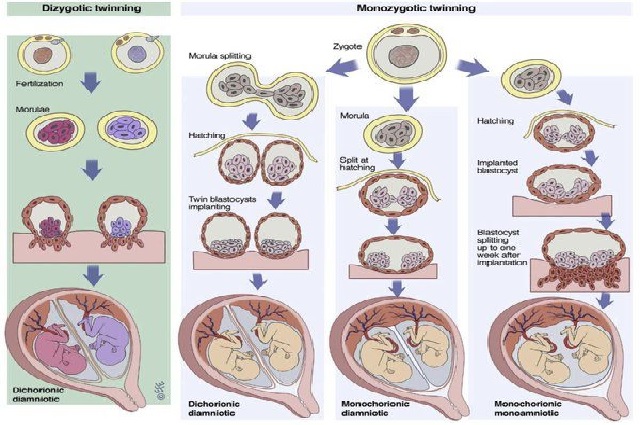
Según el artículo de Y Ikemoto publicado en Human Reproduction el 08/10/2018 y divulgado en OKILAB
Prevalence and risk factors of zygotic splitting after 937 848 single embryo transfer cycles
What is the prevalence of multiple pregnancy with zygotic splitting after single embryo transfer (SET)?
The prevalence of multiple pregnancy with zygotic splitting after SET was 1.36%.
In 2008, the Japan Society of Obstetrics and Gynaecology (JSOG) recommended the adoption of SET to reduce multiple births. Since then, to improve the clinical pregnancy rate, elective SET using blastocyst transfer and frozen-warmed ET has increased. Blastocyst culture and zona pellucida manipulation, including ICSI and AH, have been widely reported as risk factors for monozygotic twinning. However, all these studies may have included cases with dizygotic pregnancies produced by a transferred embryo and a spontaneous conception.
A retrospective observational study was performed, based on 937 848 SET cycles in registered ART data from the JSOG between 2007 and 2014. The study was approved by the Registration and Research Subcommittee of the JSOG and Juntendo University Ethics Committee.
To identify possible factors affecting the prevalence of zygotic splitting, we identified pregnancies, in which the number of foetuses exceeded the number of gestational sacs (GSs), to restrict our analysis to ‘true’ zygotic splitting. Multiple logistic regression analysis was performed using singleton pregnancy after SET, as control. P < 0.05 was considered statistically significant.
Fresh and frozen-warmed SET produced 276 934 clinical pregnancies (29.5%/SET), including 4310 twins (1.56% of pregnancies) and 109 triplets (0.04% of pregnancies). Based on sex analysis of dichorionic twins after SET, the prevalence of multiple pregnancy with zygotic splitting was 1.36%. Statistical analysis revealed that compared to singleton pregnancies zygotic splitting pregnancies were associated with frozen-warmed ET cycles (odds ratio [OR] = 1.34; 95% CI: 1.16–1.55), blastocyst culture (OR = 1.79; 95% CI: 1.54–2.09) or AH (OR = 1.21; 95% CI: 1.08–1.35). In fresh ET cycles, the prevalence rate of zygotic splitting pregnancy after single blastocyst transfer was significantly higher than that after SET cycles with cleavage embryos (OR = 2.20; 95% CI: 1.83–2.66). However, no significant difference in ovarian stimulation and fertilization methods was recognized.
In the current Japanese ART registry system, data regarding frozen-warmed ET do not include information about ovarian stimulation and fertilization methods. Registration for AH only began in 2010. There is no way of validating if data submitted by clinics is correct
Clinicians should consider whether to counsel couples about the small increase in the risk of zygotic splitting associated with some embryo manipulations.
No external funds were used for the study. The authors have no competing interests to declare.